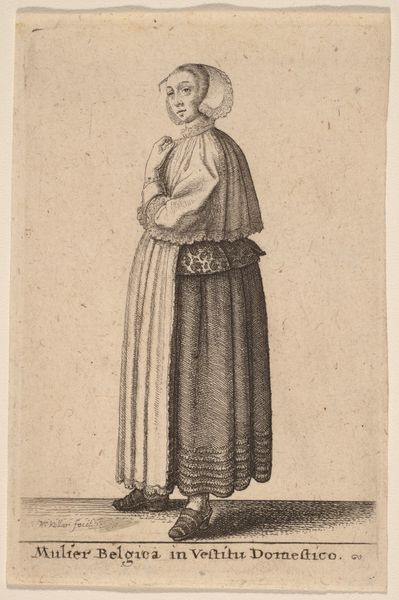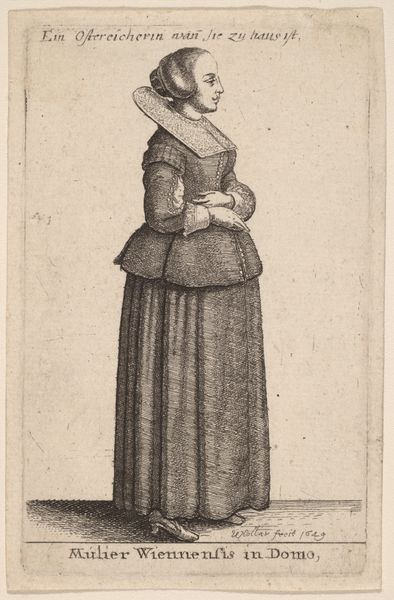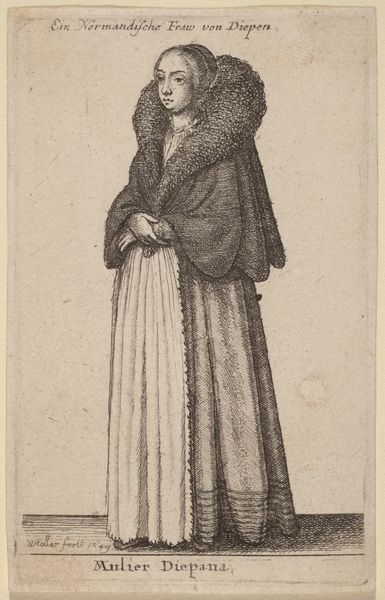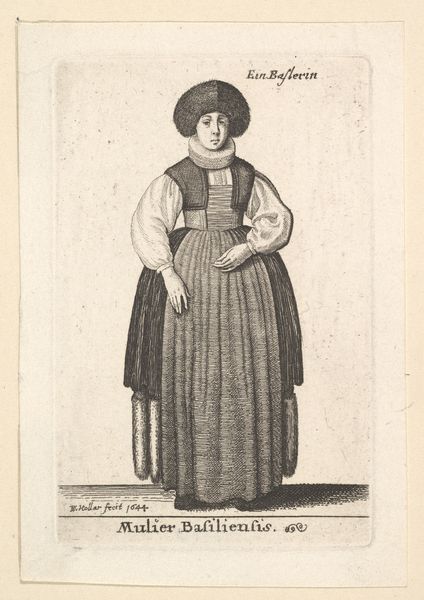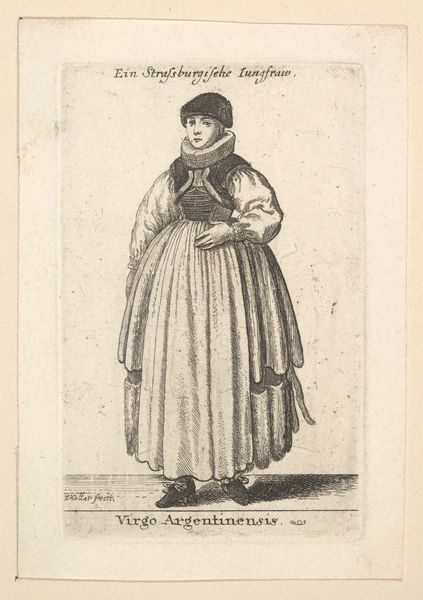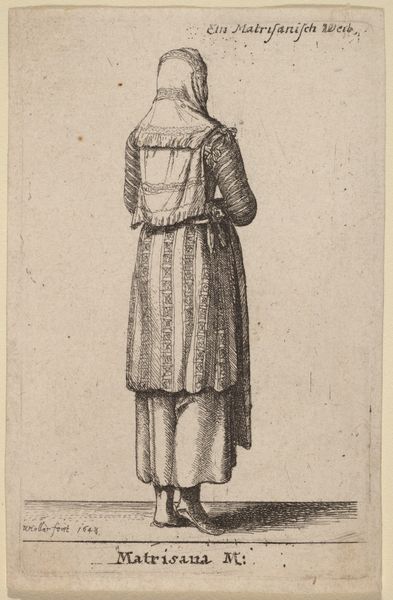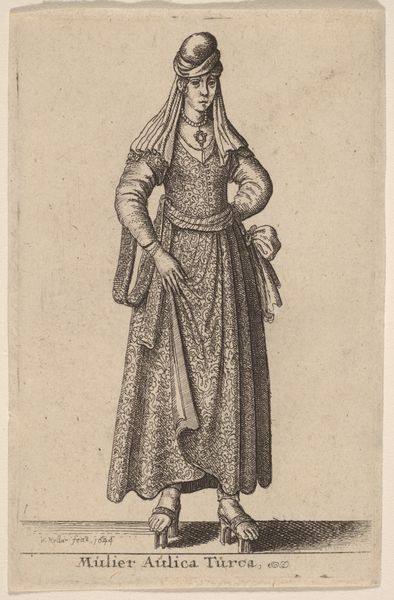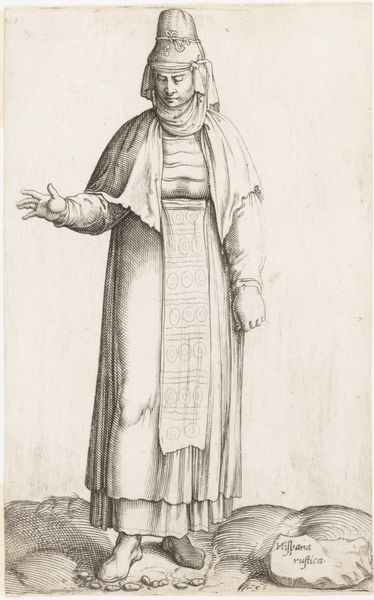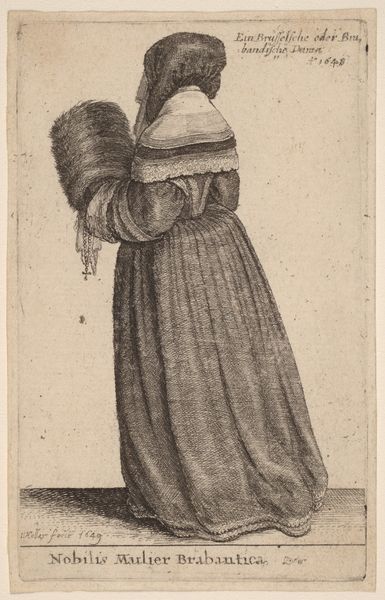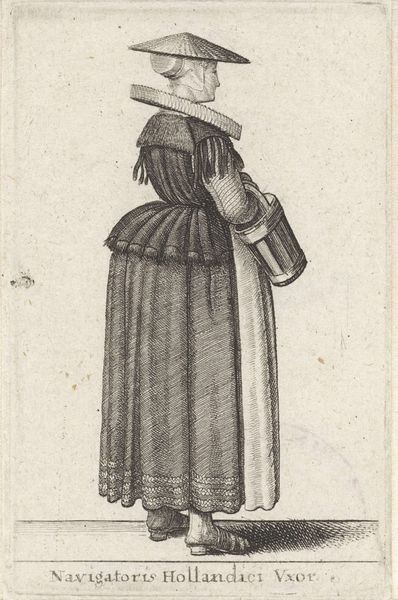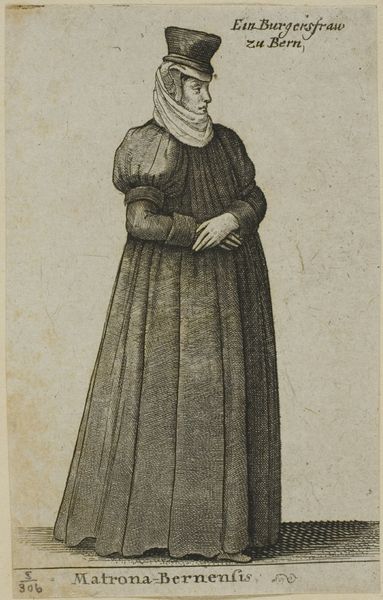
print, engraving
#
portrait
#
baroque
# print
#
figuration
#
engraving
Copyright: National Gallery of Art: CC0 1.0
Editor: Here we have *Virgo Argentinensis*, an engraving by Wenceslaus Hollar. It’s…interesting! It depicts a woman in detailed period clothing. I can't help but wonder about its purpose. How do you interpret this work within its historical context? Curator: Well, this engraving isn't just a portrait; it’s a socio-historical document. Hollar was known for recording the visual culture of his time. Consider the title, “Virgo Argentinensis” – a virgin from Strasbourg, which in Latin is Argentoratum. He’s presenting us with a specific regional type. It’s like a visual record intended for circulation, for broader consumption. Editor: So, like a fashion plate? A way to document and distribute knowledge of different cultural attire? Curator: Precisely! It also feeds into a broader trend: the development of printed imagery as a means of standardizing and disseminating visual information, contributing to both national and regional identity formation. How might the intended audience have used such an image? Editor: Maybe to compare clothing styles or to satisfy curiosity about other places. Perhaps even for artists to study and incorporate into their work. It shows how dress defined you socially, geographically and perhaps even economically. I hadn't considered its role in shaping perceptions beyond fashion. Curator: Exactly. And how these perceptions might reflect the power structures of the time. Editor: I'm definitely seeing this engraving in a new light now; it is more than an artwork but rather a social document with an intention. Thanks for the insightful perspective! Curator: My pleasure! It’s rewarding to reconsider how these prints functioned within their world, which also reframes how we understand their place in our contemporary institutions, like museums.
Comments
No comments
Be the first to comment and join the conversation on the ultimate creative platform.
